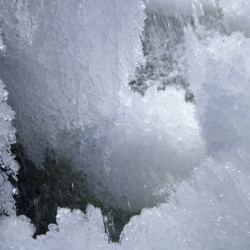
In a dramatic development, the giant rift in the Larsen C ice shelf has grown an additional 11 miles (17 km) since last week, and the leading tip of the crack is now exceptionally close to the ocean. There’s now very little to prevent a complete collapse, an event that will produce one of the largest icebergs in recorded history.
As documented by scientists at Project MIDAS, a mere eight miles (13 km) now separates the leading tip of the 88-mile-long crack and the ice front. Between May 25 and May 31, the rift grew an additional 11 miles (17 km), marking its biggest advance since January. What’s more, the rift has taken a sharp turn towards the ocean, and it has breached a zone of soft “suture” ice near the Cole Peninsula. As noted by Project MIDAS, “there appears to be very little to prevent the iceberg from breaking away completely.”
Scientists have been monitoring the crack in Larsen C for several years, but the rift experienced a major growth spurt this past December when it lengthened by 12 miles (20 km). The 300-foot-wide crack advanced an additional six miles (10 km) in January, and earlier this month a second crack appeared at the leading edge. It’s the tip of this second crack that’s now headed straight for the ocean.
When it calves, the Larsen C Ice Shelf will lose more than 10 per cent of its total surface area. The resulting iceberg will feature an area around 2,300 square miles (6,000 square kilometres), and measure 1,150 feet (350 metres) thick. If the shelf calves without breaking, it’ll be the size of Trinidad and Tobago, or twice the size of Rhode Island, and be among the largest icebergs ever recorded.
Back in 2000, a 4,200 square mile (11,000 square km) chunk of ice dubbed B-15 emerged from Antarctica’s Ross Ice Shelf, and in 1998, a 2,664 (6,900 square km) iceberg called A-38 broke free from the Filchner-Ronne Ice Shelf. While calving events are a natural process on ice shelves, the big ones like this are an dramatic sight to behold.
